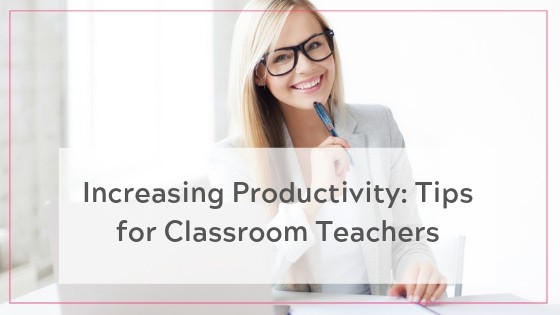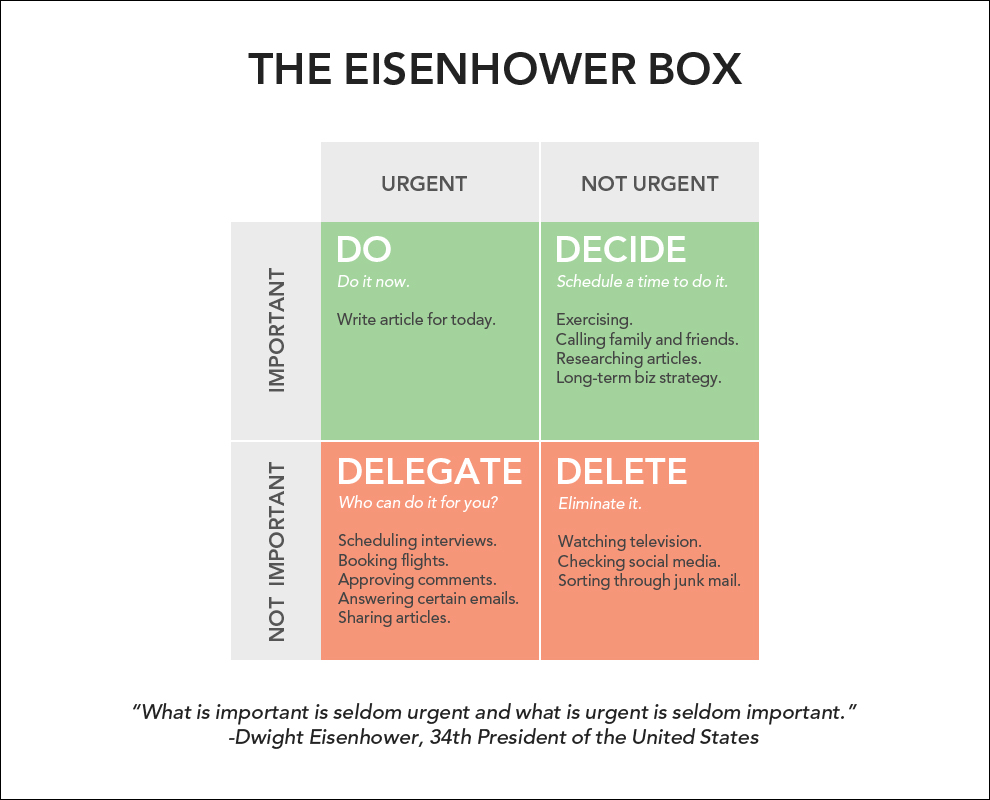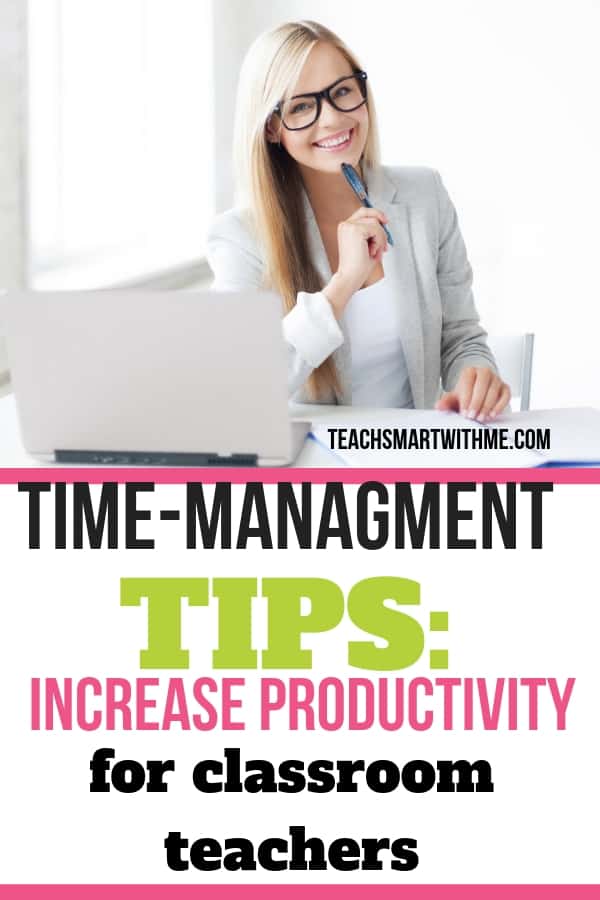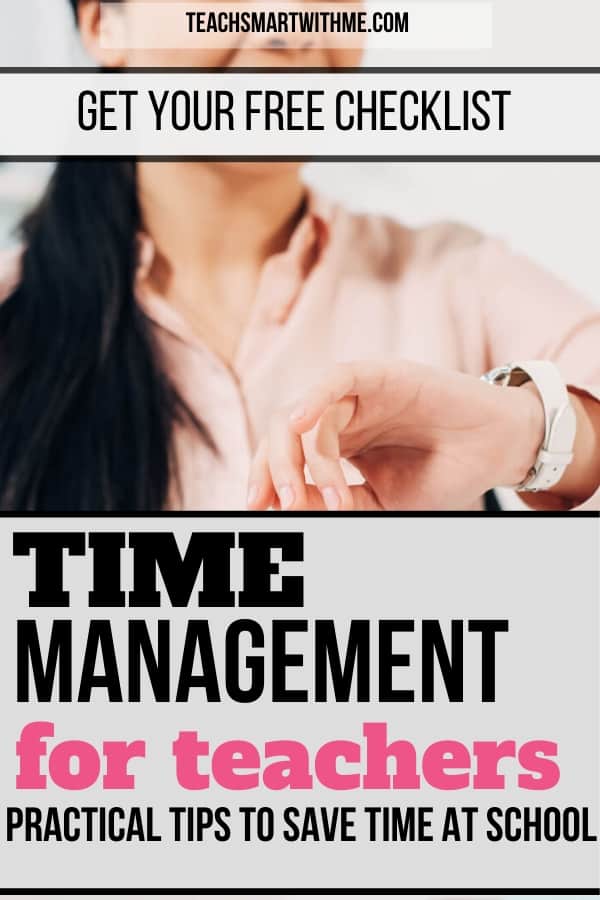Inside: Read to find out some easy and practical tips to increase teacher productivity and help work through the list of to-dos more efficiently.

Do you feel like you need to increase your productivity as a teacher?
Many teachers often feel overwhelmed with the huge workload they face each and every day. All these to-dos that can stack up and make it feel insurmountable.
But, if you can learn some simple strategies to increase your productivity, teaching might not seem as tough.
If you’re taking your work home and feel the ever-increasing workload burden, this is for you.
If you’re a procrastinator.
If you’d rather take a trip to your teacher buddies classrooms after school than do your work. I get it! That’s what I would do.
My friend and I would chat about each others’ day and enjoy the company, but I never got any work done. Before I’d realise it, it was maybe 4:00 pm and I still hadn’t accomplished any work.
I’d later grumble to myself that teaching was so time-consuming.
Do you do this?
Do you have the tendency to talk to your coworkers rather than tackling that large to-do list?
Sometimes it’s lack of motivation, but also it can be just feeling overwhelmed with how many things there are to do.
How can we manage all of this and be more productive?
It’s going to mean you’ll need to work smart!
Time management is the key to increase teacher productivity
Time management used effectively, will help you to get everything done in a timely manner without the overwhelming feeling in the pit of your stomach.
So what can you do as a teacher to increase your productivity?
To help increase teacher productivity it may involve many things and often needs an individual system that you tailor-make to suit yourself.
It really just comes back to use your time WISELY, work QUICKLY and implement some smart strategies to help you achieve the most from your day.
Do you hear everyone, say “I’m so busy!” or when you ask your teacher friend how they are and they just say “Busy!”
It’s almost like we wear ‘BUSYNESS’ as a badge of honour these days.
We know everyone is busy.
Often teachers get into this busy mode and rush around like ‘chooks with their heads cut off’ – can you picture it?
I imagine the hilarious animation Chicken Run with the voice of Mel Gibson in the background. Funny, but not necessarily a pretty sight to watch!
But like Kathleen Morris from Primary Tech says, “Busyness can be a THIEF of your time.”
Busyness vs Productive
So what is the difference between being busy and being productive?
I found this informative video that explains it really well. Have a watch here:
So, if life is so busy for you, I think you might need to alter your mindset. Instead of having a scarcity mindset, thinking you don’t have enough hours in the day, change it to be an ABUNDANCE mindset – no longer worrying about how many hours are in the day.
You need to tell yourself, “I’m busy… but, everything will happen in the right timing. Also, don’t forget to be proactive in getting a system in place that will improve your time-management skills and something that will work best to increase your productivity.
Much like Kathleen Morris, I have always been interested in methods to improve productivity.
In other industries I’ve worked at, where productivity was key, I successfully used a variety of methods to help save time and work more efficiently.
Now that I’m a teacher, I want to use this knowledge in my own working life to save time, as well as share these strategies to help YOU to work smarter as a teacher too.
I’ve also asked other teachers about their productivity tips and I’ll share their ideas with you too.
There’s such a wealth of knowledge out there. Just pick and choose what suits you best. Maybe try something new and see if it helps!
Practical tips to increase teacher productivity… from other teachers
Following is a YouTube clip by a teacher from Pocketful of Primary. She sums up time management for teachers very well and offers some great tips that I use too!
The summary of her helpful tips are outlined below, along with some of my own and other classroom teacher’s suggestions to help you improve your productivity in the classroom. (Keep reading!)
You can do anything, but not EVERYTHING.
I love this quote from the video and it makes me think about how important it is to set boundaries as teachers.
Tip 1: Write your to-do list ahead of time
I definitely support writing a to-do list and if you would like to read my post about my list program that details how to save time in the classroom here is a link.
I think the key to the list system is definitely writing it AHEAD OF TIME.
As she says, if you write your list the day before, you will know in advance what you will have to get done and then if it’s on your mind, you will more likely make these jobs a priority.
Another suggestion is to plan ahead and make a to-do list for next week and/or next month, and then your tasks won’t suddenly all catch up to you at the same time.
Get your FREE Working Smarter checklist here:
Helpful online apps for list-making:
I’m usually a pen and paper person and love to cross off tasks when completed, but if you aren’t, and you love lists on your phone or computer, here are some suggested digital lists that can be helpful for your to-do list:
- todoist.com – you can customise your list with categories and colours to help sort your life
- Notes app on your smartphone – quick and easy on-the-go way to jot down tasks that pop into your head
- Reminder app on iPhone – I use this app at times. It organises your list with bullet points and has a function to easily complete your finished tasks
Tip 2: Figure out when you are most productive
It’s important to find out the best time when you the most productive.
Are you productive in the MORNING or at NIGHT?
This is clever to think about, because you will find that’s you’re more mproductive when you’re alert.
Early mornings are often not my best time – sometimes my brain doesn’t kick-start until about 10 am. I often find I’m more productive when I stay later after school to get my work done. (It’s also quieter after everyone has gone home, which helps cut back on interruptions).
When working after work, I know I need to have deadlines setup, because if I’m not careful my mind will not shut off before I go to bed. Thoughts will go around and around in my head all night. It can be a bit of a balancing act. Something to think about.
It’s all about finding out about when you work BEST and then use this time effectively to be more productive.
Tip 3: Set blocks of time and reduce distractions
Time blocking is a strategy that many time management experts use to increase productivity.
This is where you set a block of time to work and while working you ensure that you are not distracted. This is an excellent strategy to get work done.
How to reduce distractions:
- Lock your classroom or office door
- close yourself off from the world
- have everything you need with you, to minimise time loss
- turn off your phone or set on aeroplane mode to stop distractions
- set a timer and focus on work for the entire time
Tip 4: Give yourself rewards
I love this idea of giving yourself a reward if you achieve what you have set out to do.
It might be to take time out for yourself, do something fun or give yourself a food treat. I think a great reward would be chocolate 🙂 (but not too often and sugarfree, of course).
The thing to remember is, we’re all human and not robots, so when we have a reward in place, it can help you get to the finish line, just like our students need too.
Tip 5: Set short and long term goals
I’m a big believer in the power of goal-setting. I have achieved wonders in my life with goal-setting.
As suggested in the video, have your short and long term goals listed helps to break down these larger more daunting goals into smaller and more achievable chunks or tasks.
It also helps you have focus and know where you’re heading. This is no different for us as teachers.
Set goals for yourself for the YEAR, then for the MONTH and then each WEEK. NOTE: This is a great idea for larger projects, that you want to work on throughout the year/term.
I find that by setting goals, it helps to stop feeling like I am ‘floating around’ in life and keeps me much more grounded.
Tip 6: Hold yourself accountable
Holding yourself accountable is very important.
If you say you are going to do something, you need to make it a PRIORITY and then get it done.
If you don’t do this, procrastination can take hold and you end up increasing the burden and often making your to-do list seem much more insurmountable.
Keeping yourself accountable is easier said than done. If you find you struggle in this area, set yourself some external accountability. This can be either writing to-do lists with dates attached or having clear deadlines for tasks.
Tip 7: Reach out for help
Don’t be afraid to reach out for help if you’re struggling to get through your tasks. It does not mean that you are a failure if you ask for help.
I truly believe that teaching needs to be collaborative. If we try and be an island, and do it all on our own, it can be isolating as well as unachievable.
ASK for help. ASK for extended deadlines. And ASK for icecream.
Well, maybe not the last one 🙂 Unless you have a teaching friend with a sweet tooth and a handy freezer!
Reach out to your teaching team, or on social media. Teachers are very caring people and I know that you will get the help if you ask for it.
Additional helpful tips to increase teacher productivity
- Use checklists to streamline your work. This is a great tip. I love checklists. They are quick ways to get jobs done; like monitoring student learning, tracking student assessment and no-name work, and completion of tasks.
- Don’t multitask – Often we think that multitasking is the way to be productive and get more done, but this can be a bit of a myth. You end up spreading yourself too thin. Only do one thing at once. This is a clever tip and then you won’t feel like your stretched in too many directions.
- Use the “Don’t touch it twice” principle. This can be used with emails, paper, jobs… anything. It makes you much more productive because you aren’t double-handling things.
- The “I always” routine – this involves repeating certain tasks at the same time or day each week. For example: “I always mark homework on Mondays.” and gets you into a great routine, which eventually you will get quicker at. This is a useful productivity tip that I use too. (If others try and take your “always time” politely let them know this is the time you ‘always mark or whatever” and then set a boundary about how much time you can give them).
- Batch your tasks together to save time – use a priority to-do list (available free from the Teacher Resource Library), to help you focus your attention and work smarter with your valuable time.
Click here to get the FREE work Smarter printable:
Teacher tips to minimise distractions

- Put your headphones in your ears to help stop others talking to you
- shut and lock your classroom/office door, turn your lights off – (this might make people think you are not in there) I know teachers that do this 🙂
- Go somewhere where you won’t be disturbed
- If people continue to talk to you when you have things to do, SAY THESE WORDS: “love to chat, but…”
Bonus teacher productivity tip
The Priority Grid
The priority grid involves a system of prioritising your tasks.
- When you write down your tasks on your list, each item is categorised into Urgent or Important.
- Then, each task is numbered 1,2,3 etc, according to its importance.
- Now do the number 1 things first and work your way through the numbered list.
The Priority Grid is a great way to manage a detailed list and help you find out what really needs to get done and when.
This is a version of this and it’s called the Priority Matrix or the Eisenhower Matrix (Box). It helps to see the visual, to understand the idea. You can see that if a task is important and urgent, you need to do it now. But if the task is not urgent and not important, get rid of it!

Remember: The urgent tasks will always take over, so don’t forget about the important ones too!
Practical tips to increase teacher productivity:
If you’ve skipped through to the end, I get it. We’re all busy! Here’s the summarized version:
- Write your to-do list ahead of time
- Figure out when you are most productive
- Set blocks of time and reduce distractions
- Reward yourself when you get the job done
- Set short and long term goals
- Hold yourself accountable
- Reach out for help
I hope these tips for time management have helped give you some ideas that could increase your productivity and help you to work smarter, not harder at school.
Interesting Time-management Articles
- Top Ten Time management tips for Teachers
- 10 Productivity Tips For Teachers (And Students)
- The Productive Teacher
- Teacher Productivity Vs. Teacher Effectiveness
- 10 Ways to be More Productive as a Teacher
Why not pin it for later


Remember you are worth it!
Michelle xx
LATEST POSTS
- 9 Quick Wins to Boost Teacher Energy, Naturally
- The Top 10 Things You Shouldn’t Say to a Teacher [To their face, anyway!]
- 3 Empowering Mindset Shifts for Teachers [That Will Change Your Life]
- Exposing 12 Self Care Myths: Important for Teachers to Know
- 6 Important Lessons I Learned from Teacher Burnout


Leave a Reply